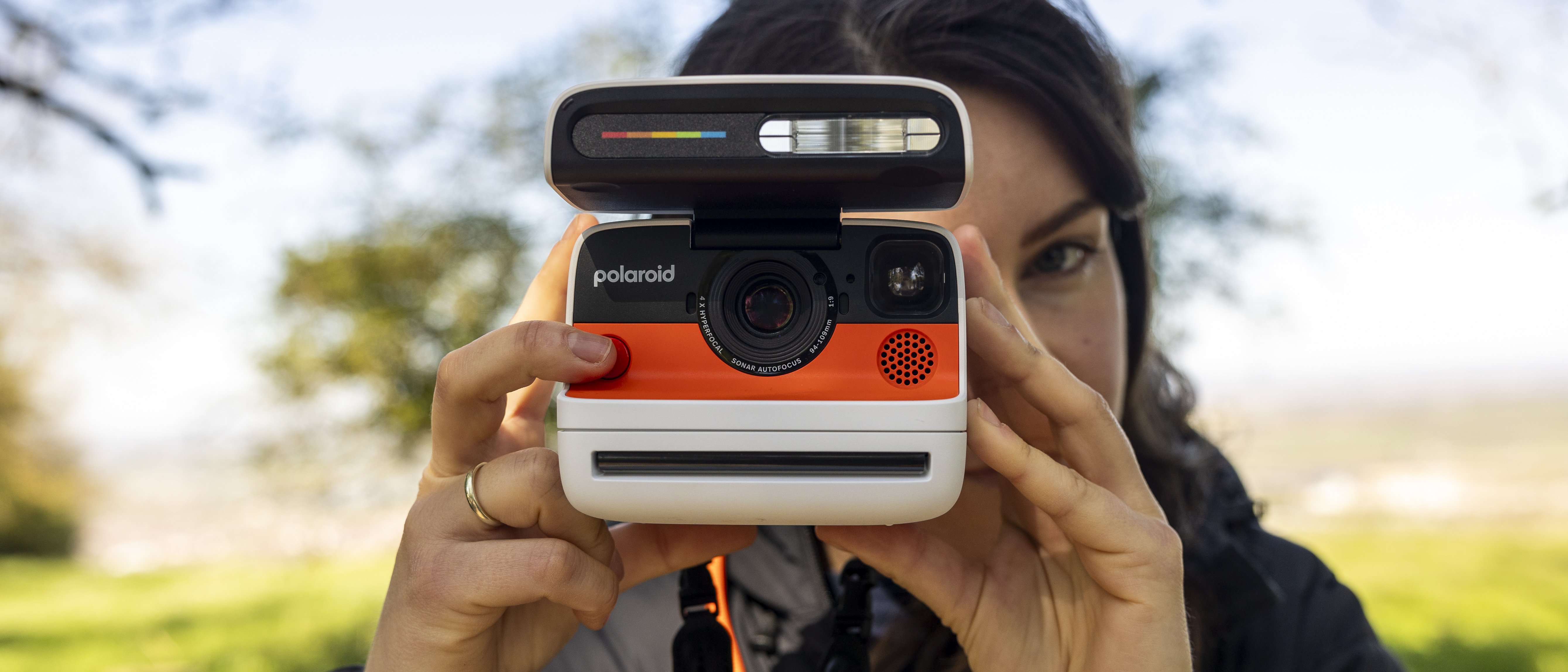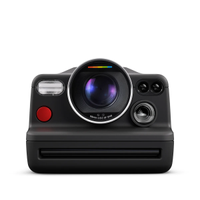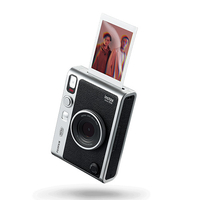TechRadar Verdict
The Polaroid Flip's point-and-shoot simplicity is great for beginners and saves wasted shots if you hand the camera around at parties and family gatherings. The flip-up lid design is unique and creates a streamlined package that's easy to cart around despite its chunky dimensions. Experienced snappers might find the automatic settings more limiting, but I think most will enjoy how well the sonar autofocus and multiple lenses adapt to give you sharp shots with little experience.
Pros
- +
So easy to use
- +
Well-made and designed
- +
Lid protects the lens and viewfinder
Cons
- -
Often overexposed with the flash
- -
Film ejection issue wasted a pack
- -
Heavier than rivals
Why you can trust TechRadar
Polaroid Flip: Two-minute review
Like many tech journalists and photographers of a certain vintage (aka born in the early 90s), I always remember there being a Polaroid at family parties when growing up. Later in my teenage years, when studying photography at university and trying my hardest to be cool, I bought a secondhand Polaroid Sun 600 on eBay, but finding decent film then was harder than it is now. Eventually, the cost superceded the cool, and I gave up.
Polaroid has come a long way since then, and has been revisiting its heritage with the aesthetic of newer releases. We had the Polaroid Go 2 in late 2023, similar in looks to the Polaroid 1000 Land Camera. In March this year, the brand refreshed its Now instant series with the Now 3 and Now 3+, cameras that I think share the character of the original OneStep SX-70.
I'm a Polaroid nerd, so I was excited to test the new Polaroid Flip before its official release. But given that the last camera I used was the flagship Polaroid I-2, in all its sharp lens, manual control glory, I was apprehensive about how a more affordable model could compete with the best instant camera for pros.
Polaroid's tagline for the Flip is that it's the camera for an analog life. For "instant photography over instant gratification." Presumably it means for people who appreciate physical prints over looking back through their phone camera roll. The Flip keeps things simple and easy-to-use; there are no filters or effects, and the main talking points include common instant camera features like double exposures and self-timers.
Despite lacking manual controls like the Polaroid I-2, the Flip feels like a camera that more advanced instant shooters can still appreciate and enjoy. A clever four-lens system is brilliantly effective at adapting to varying subject distances, meaning you get mostly sharp shots, even at dark parties.
And there are subtle but clever ways the camera uses 'scene analysis' to guide your images. A red viewfinder warning light alerts you to a shot being over- or underexposed, and an alert appears on the lid display when you get too close to a subject. Selfies are a tad tricky, though, and macro isn't a viable option given the camera's restricted minimum focusing distance.
Polaroid's signature tones shine with the Flip, though colors in my experience sometimes leaned unexpectedly toward green. Also, while the B&W i-Type film showed strong contrast on occasion, I found that highlights could easily blow out with Polaroid's most powerful adaptive flash yet.
It's always difficult to review Polaroid performance, because the expectations are so different from most other cameras. Part of the joy of analog lies in experimentation, and yet with Polaroid film being so expensive, you want to know that most of your shots will at least come out intended. Despite minor disappointments with the Flip, I loved the results overall. I think those willing to practice, learn and refine their shooting approach over time will too.
Polaroid Flip: price and availability
- Costs $199.99 / £199.99 (Australia pricing TBC)
- Early purchase for Polaroid members starts April 15
- On sale at Polaroid.com from April 29, retailers May 13
The Polaroid Flip is available from a few different dates depending on who you are. Polaroid members can purchase the camera on the official website starting April 15, and general access follows from April 29. It's destined for general camera retailers from May 13.
The Flip's price at release is $199.99 / £199.99. A year ago I would have thought this quite steep, but recent US tariffs and spiralling tech costs have made me reassess. Still, the Flip is at the serious end of instant cameras, at more than twice the price of the entry-level Instax Mini 12. It's more expensive than the Fujifilm Instax Wide 400 model ($149.99 / £129.99 / AU$229.99) and the older, square-format Instax SQ40.
But then it sits below the Polaroid I-2 ($599 / £599 / AU$1,099) with its super-sharp lens and the hybrid Instax Wide Evo ($349.95.99 / £319.99 / AU$599) which has 20 film and lens effects and allows you to select what you print to save on film.
You're tied into using either Polaroid 600 or I-Type film with the Flip, and realistically this is more expensive per exposure than Instax. Prices vary a lot depending on what country you're in, and bundle packs can help to bring the cost down, but an 8-pack of I-Type costs roughly the same amount as 20 photos of Instax (Wide or Mini).
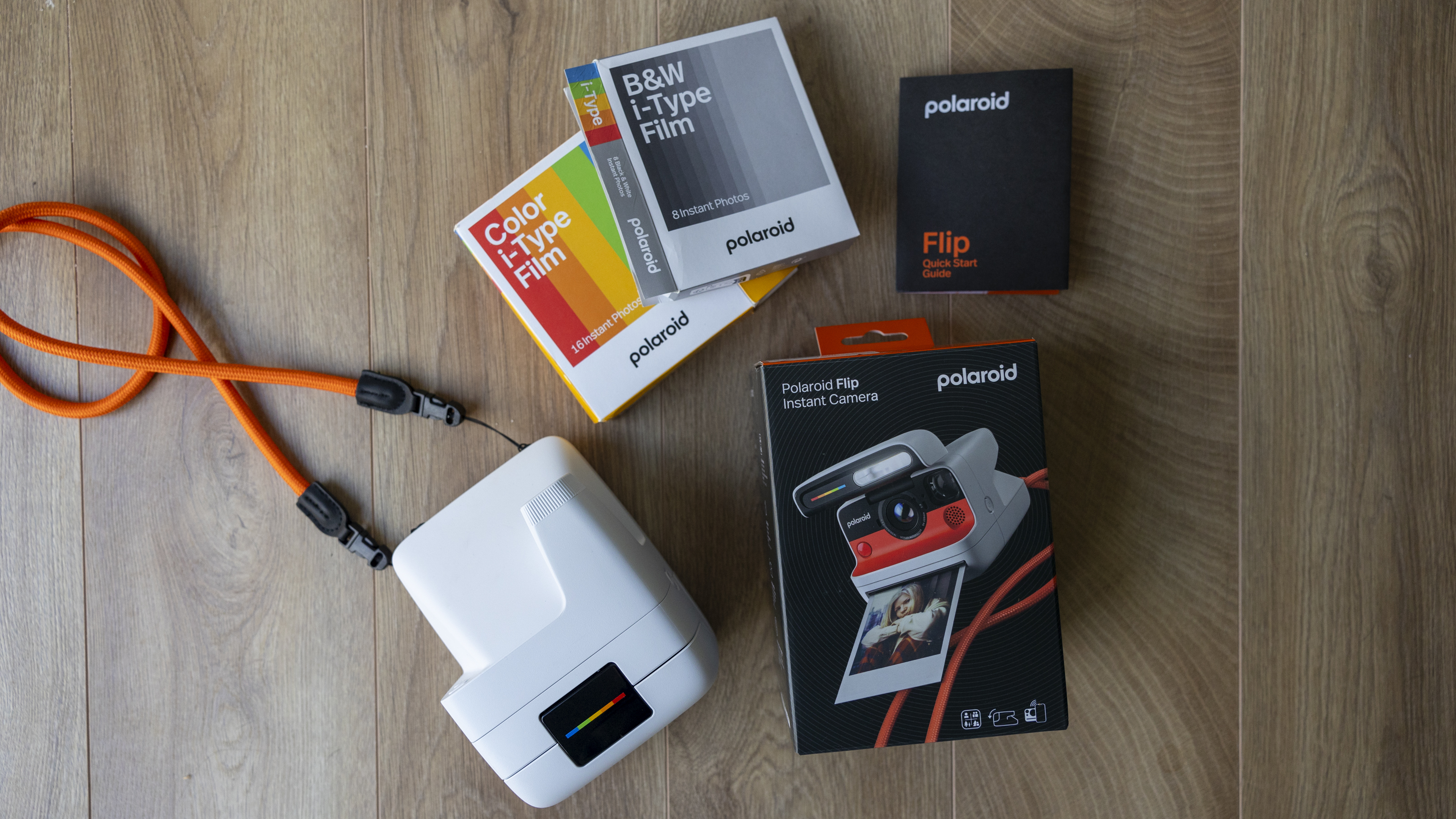
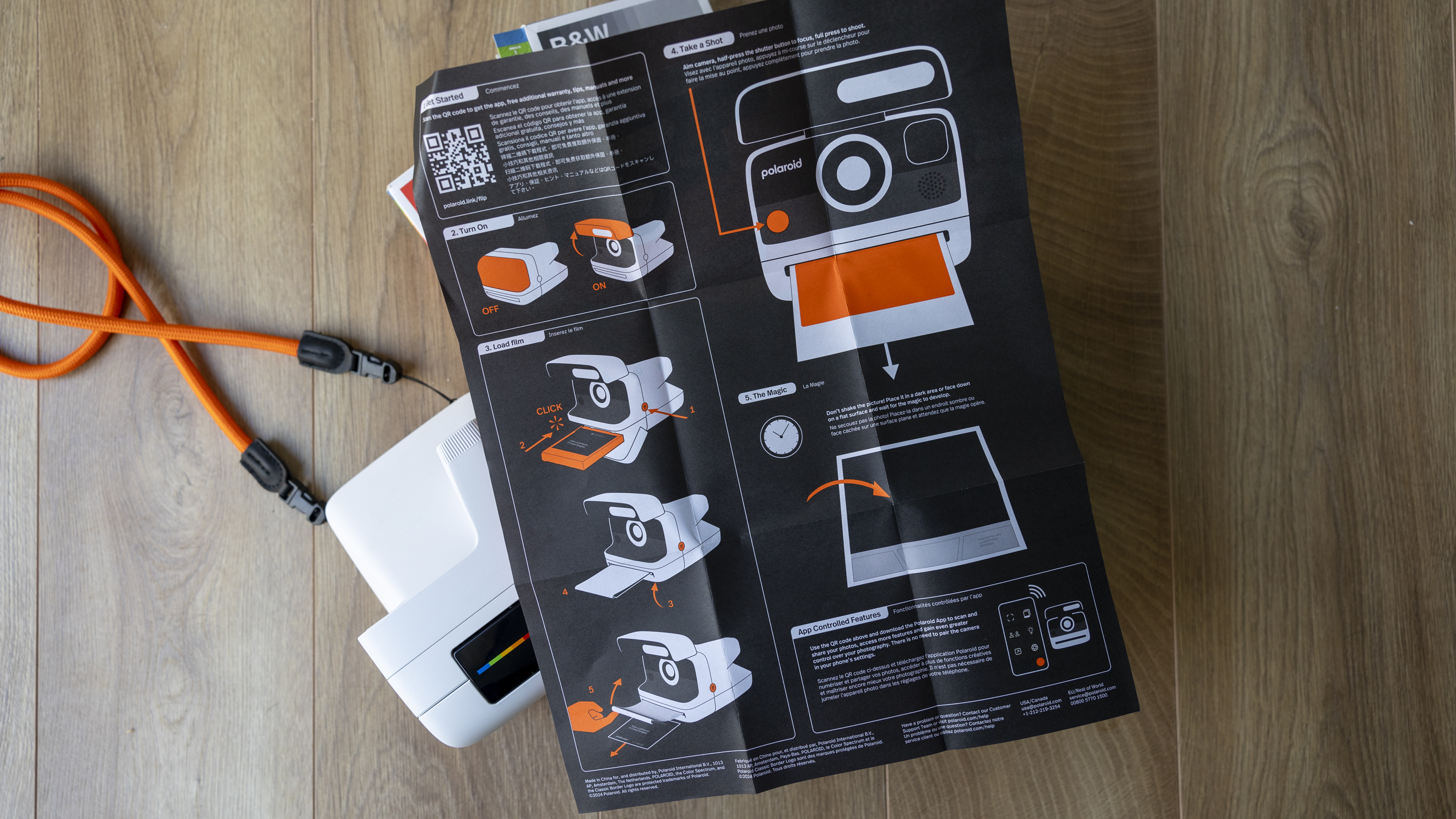
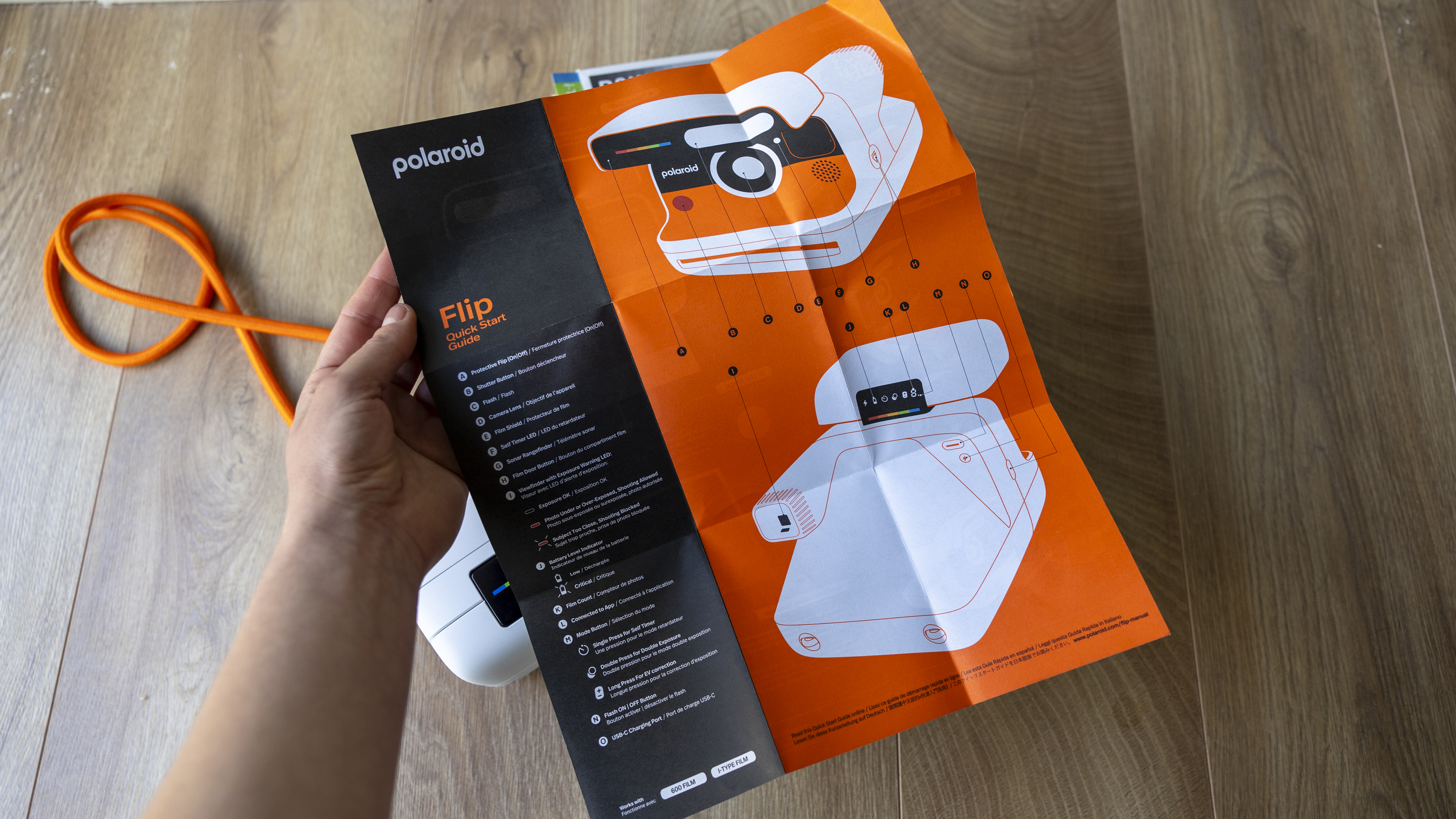
Polaroid Flip: specs
Lens | Two-lens structure with 4 zones. Auto-switching hyperfocal optical system |
Weight | 22.9 oz / 648g |
Size (lid closed) | 6.44 x 4.61 x 3.53 in / 163.5 x 117.2 x 89.7 mm |
Film type | Polaroid I-Type, 600 |
Aperture | f/8.5 - f66 (depending on zone) |
Shutter | 1/200 - 30s (Bulb mode up to 99 hours) |
Battery | Lithium-Ion Polymer |
Connectivity | Bluetooth, USB-C charging port |
Polaroid Flip: design
- Heavier than the Polaroid I-2
- Flippable lid for lens protection
- Viewfinder LED and ‘lid’ display
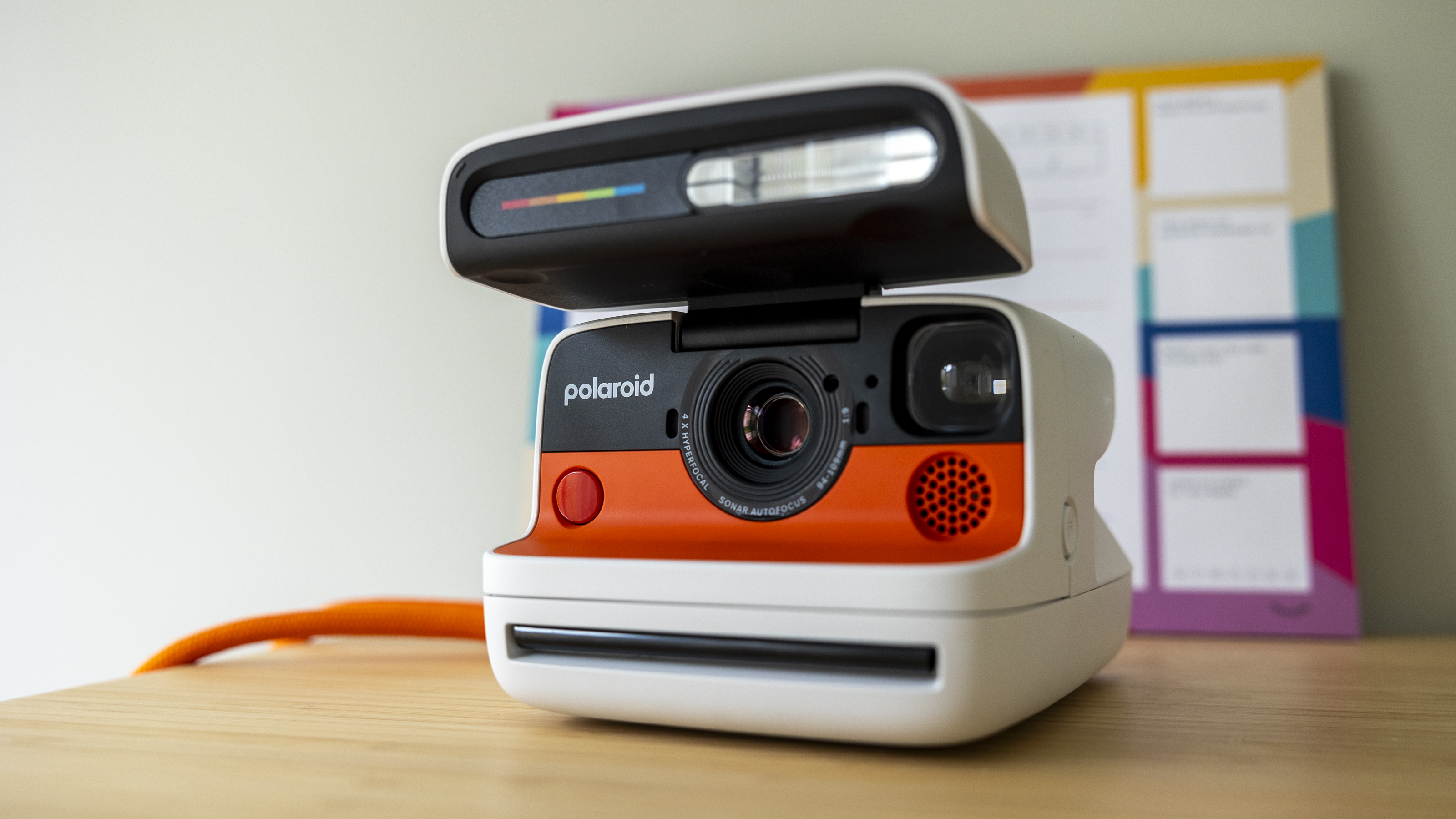
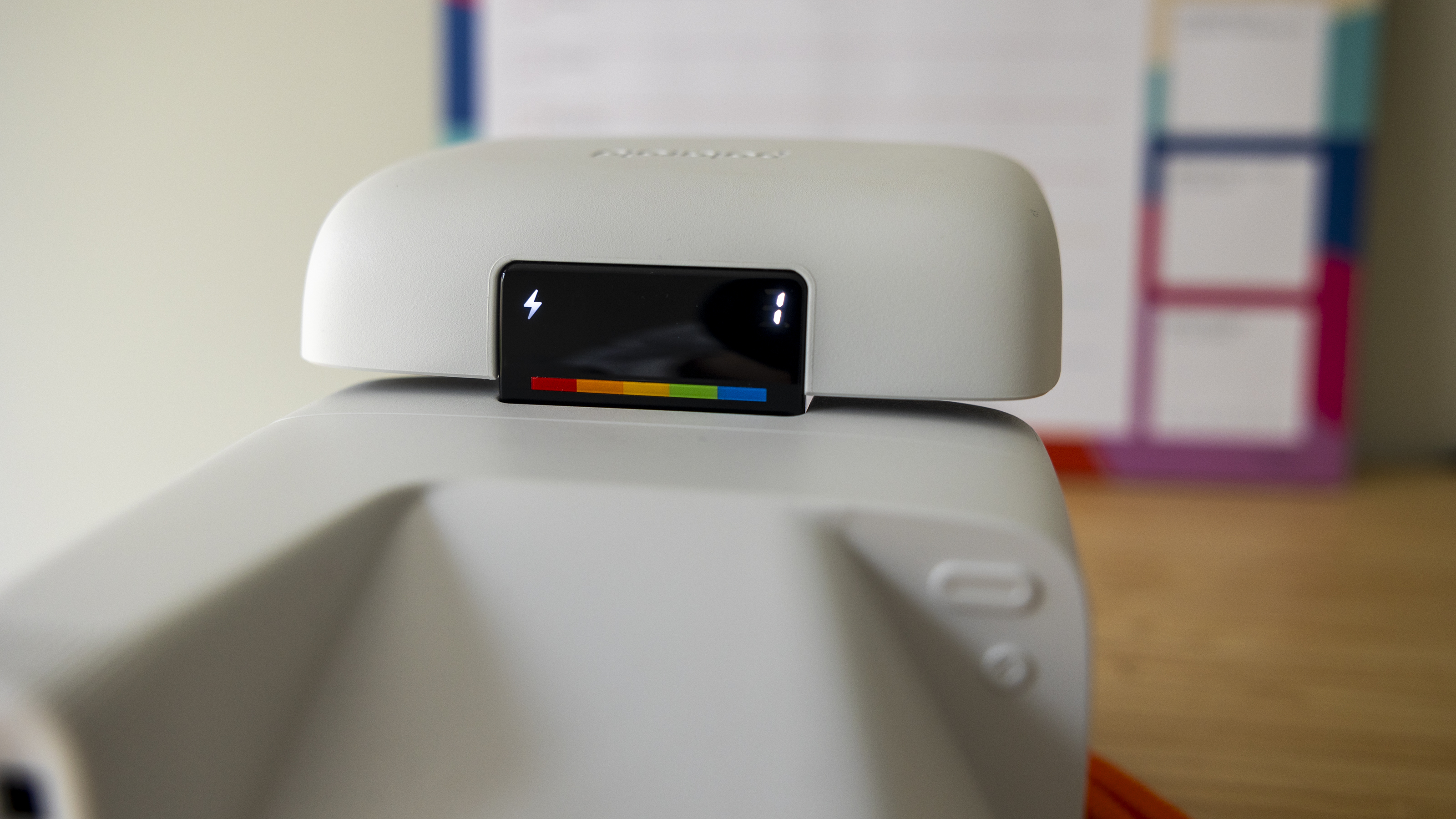
The Polaroid Flip is a boxy, chunky camera. That much is obvious when you get it out of the box. It weighs 200g more than the Polaroid Now+ and 85g more than the Polaroid I-2, as well as being deeper and taller. But that’s because the design is so different from anything else in the current lineup.
Rather than having a lens cap to cover a protruding lens or the front face exposed, Flip has a (you guessed it) flip-up lid. This lid pulls up smoothly and clicks into position at the top when you want to take a photo. When the lid is down, the camera automatically turns off, and the most important parts of the camera are well-protected.
I really like the design, which gives the camera a clean, modern silhouette and means you can pop it in a bag without fretting about dust getting in the lens grooves. And I still felt it was distinctly Polaroid. The Flip comes in a subtle matte black colorway or white with a pop of orange for more daring users.
I found the exterior of the white model prone to marks, but the plastic casing is easily wipable. And twice when I was out shooting, two people stopped to tell me that I had “a really cool-looking camera”. Street credibility points to me.
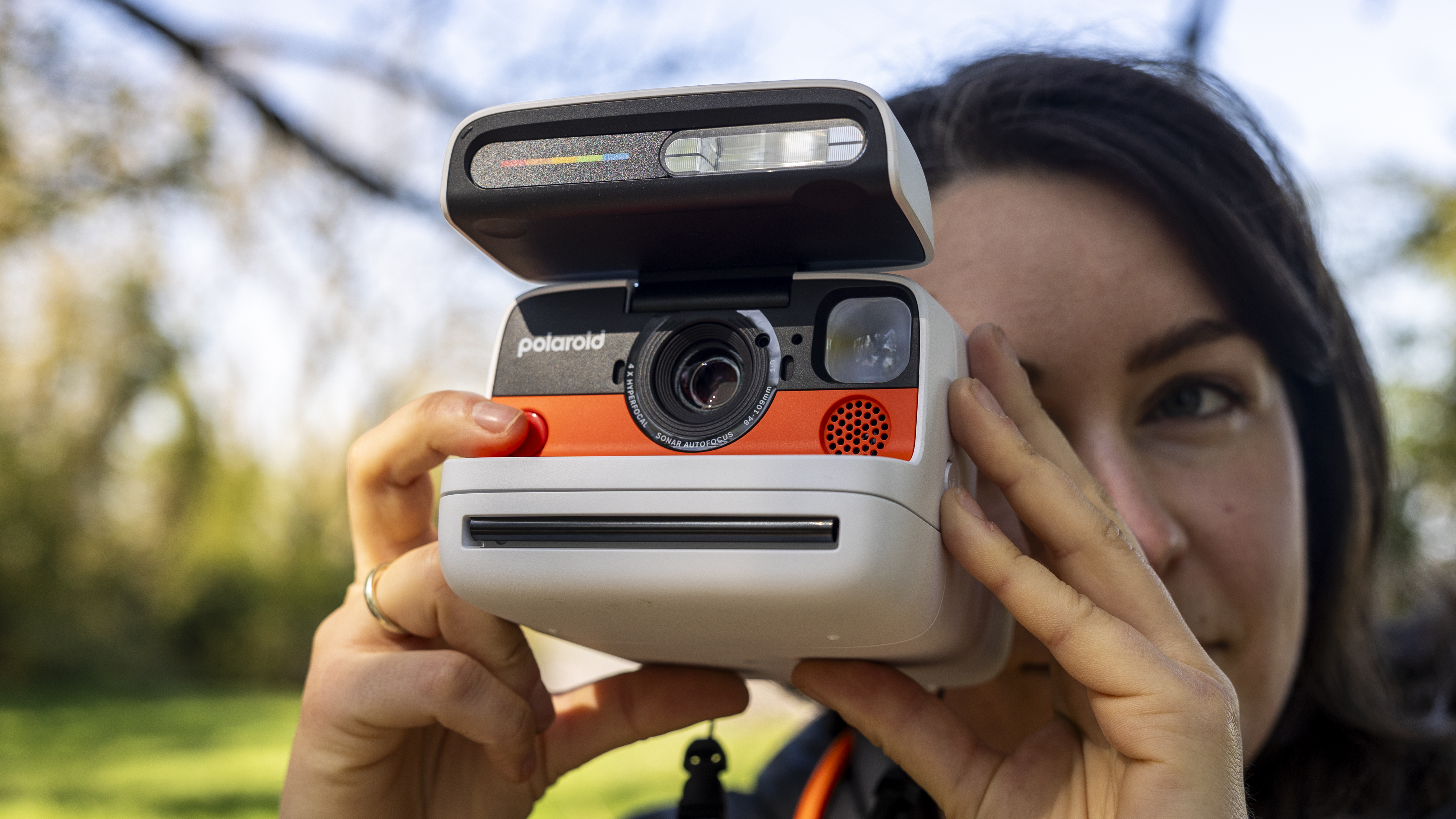
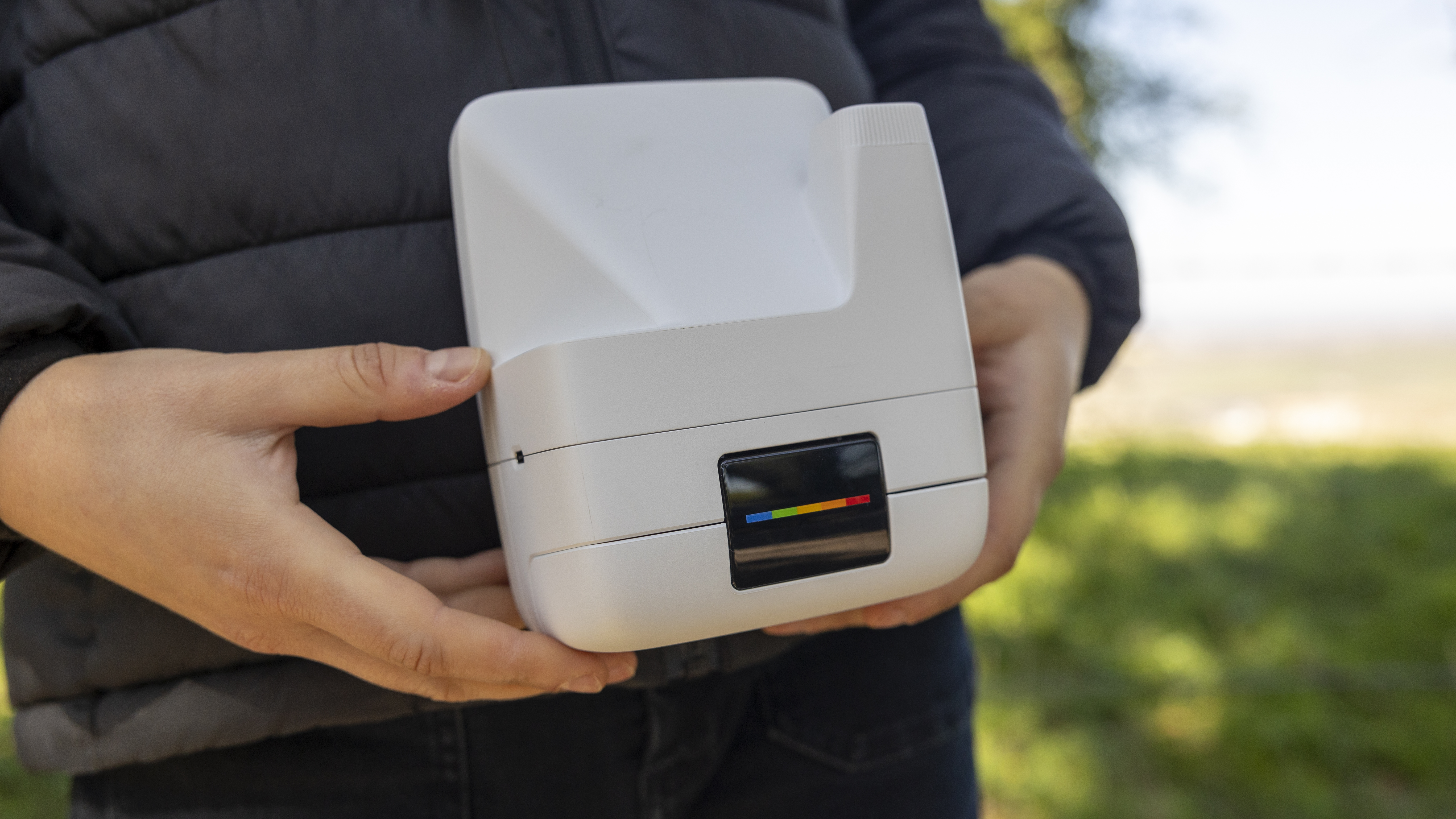
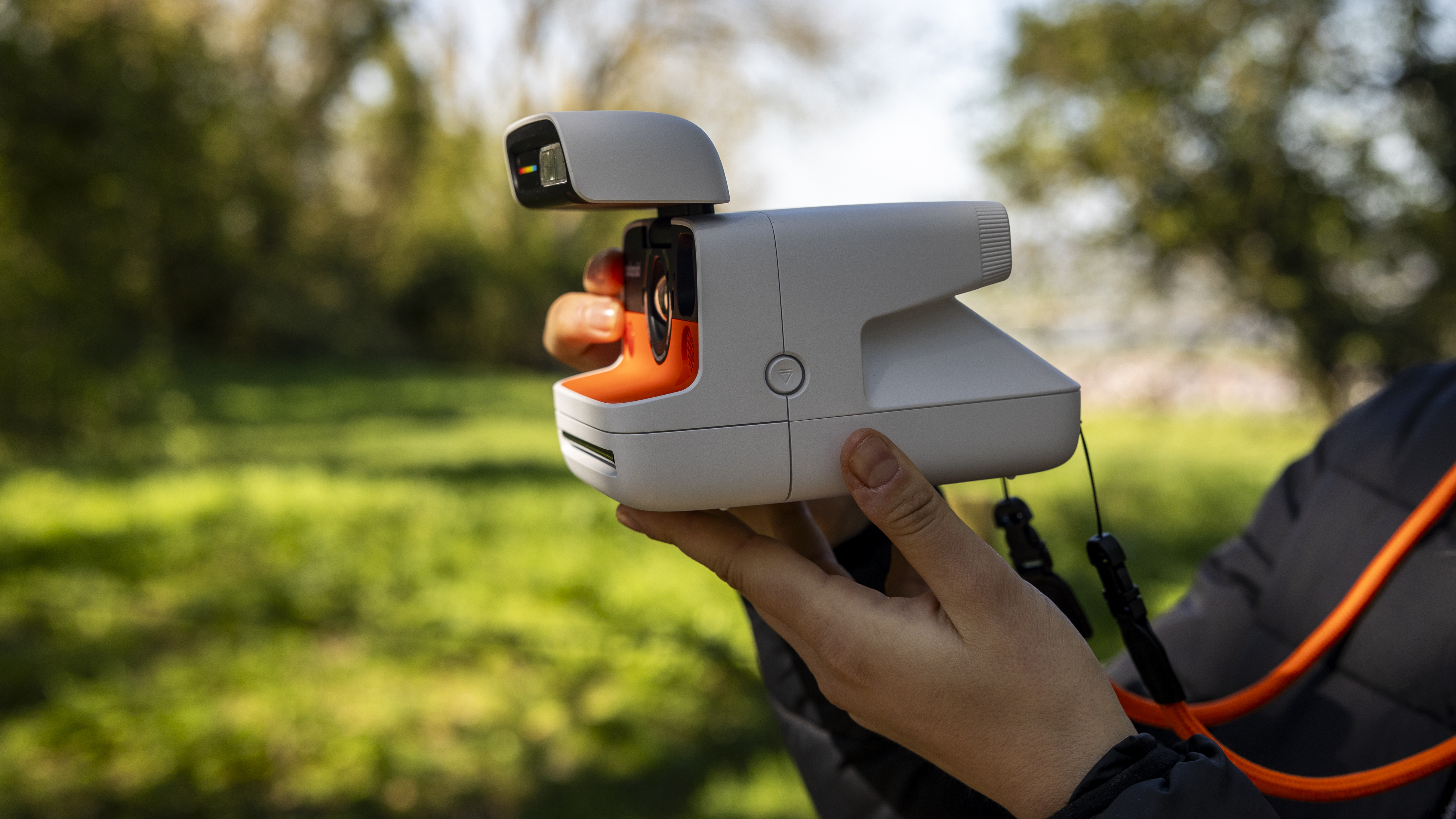
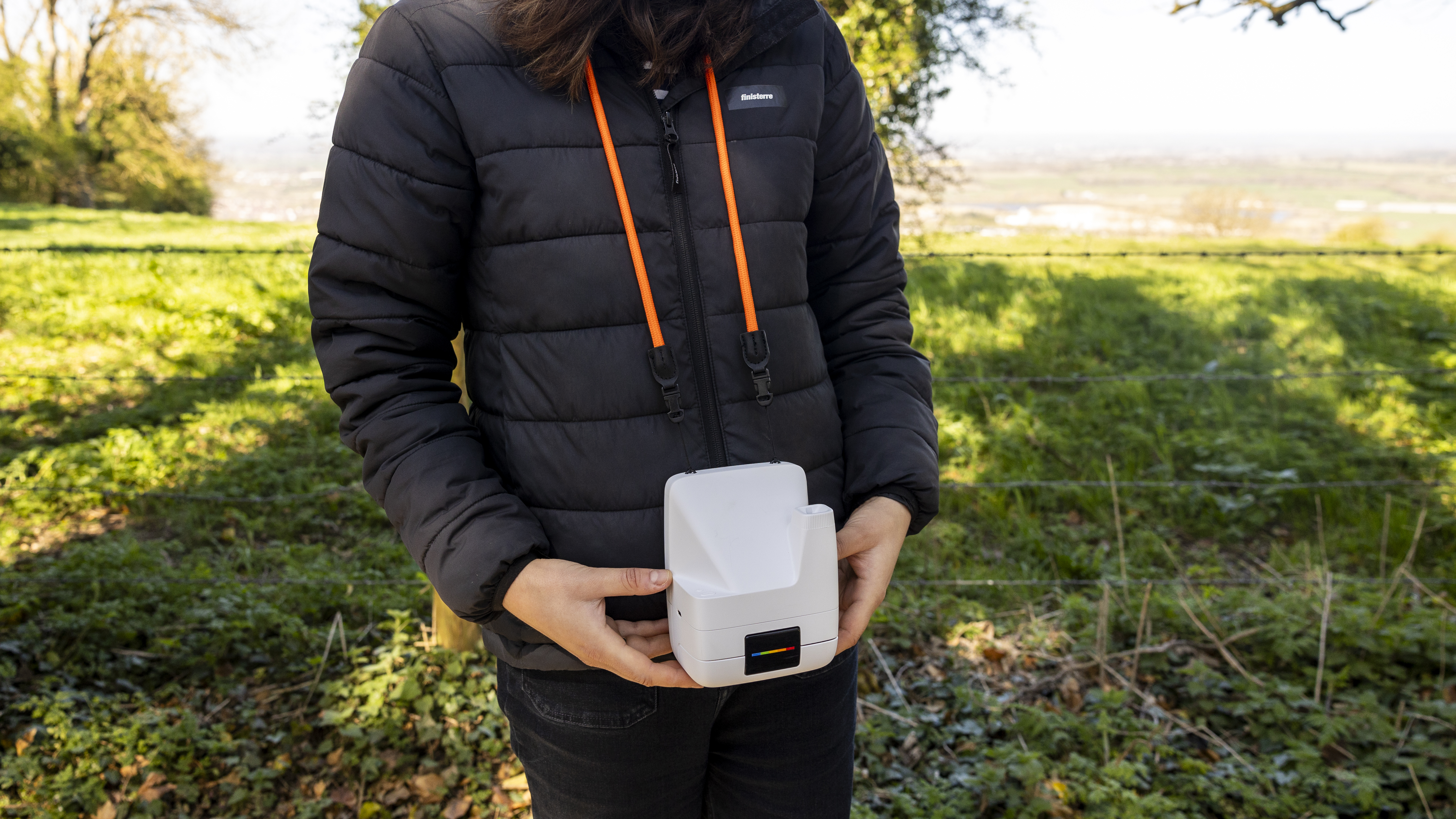
According to the specs sheet, the Flip is made from four types of plastic, including acrylic and polycarbonate. These have all been chosen for properties that would make sense in a take-anywhere camera, and they keep the body as lightweight as possible but also strong and impact-resistant.
The build quality doesn’t feel brittle or cheap, the buttons are solid to press and flipping up the lid is super satisfying. That said, the handling is a bit awkward and I had to turn the camera around to get a good hold of the lid every time. It’s a two-hand job. You also get a strong rope strap in the box so you can wear the camera – comfortably, I might add – around your neck.
Controls are pared back, as is usual with Polaroid and most instant cameras. Two buttons at the back right let you toggle through settings such as flash, double exposure, self-timer, and exposure compensation. These show up as icons on the nifty LCD screen on top of the camera, and they’re easy to see even in bright sunshine. It took me a while to work out what button combo activated each mode, but the fold-out paper guide in the box – in itself another well-thought-out analog nod – gives you pointers.
There’s a USB-C power input on the right side of the camera for recharging, and an eject button on the left to open up the film door and pop in a pack. The big orange shutter button on the front is easy to find with your fingers and can be depressed slightly to focus and pressed fully to fire. The viewfinder itself is basic but easy to use, and I found that what you see through it matches closely with what’s printed, helping with composition.
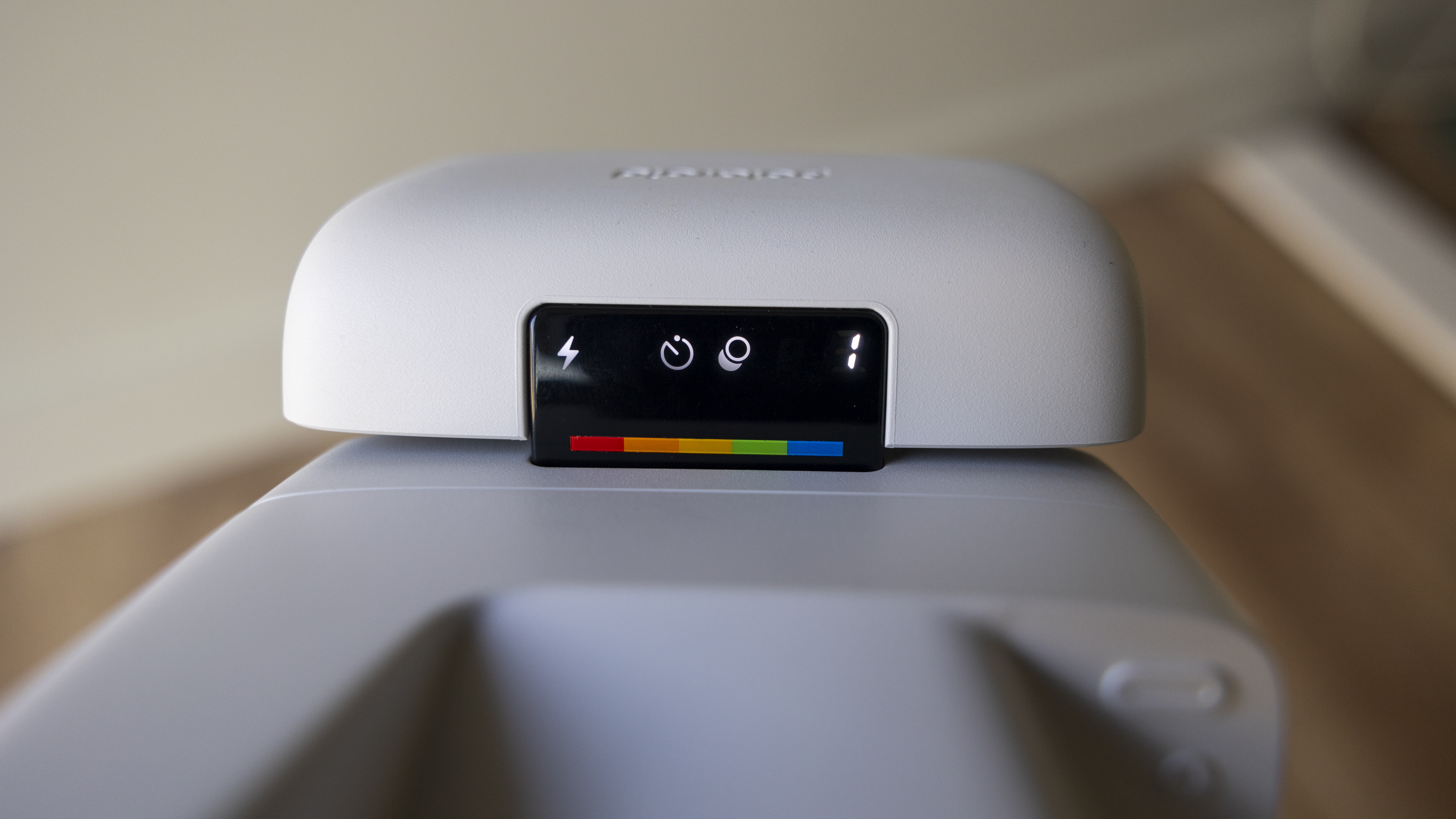
Polaroid Flip: performance
- 4-lens system for different distances
- Sonar autofocus detects subject distance
- Adaptive flash for up to 4.5 meters away
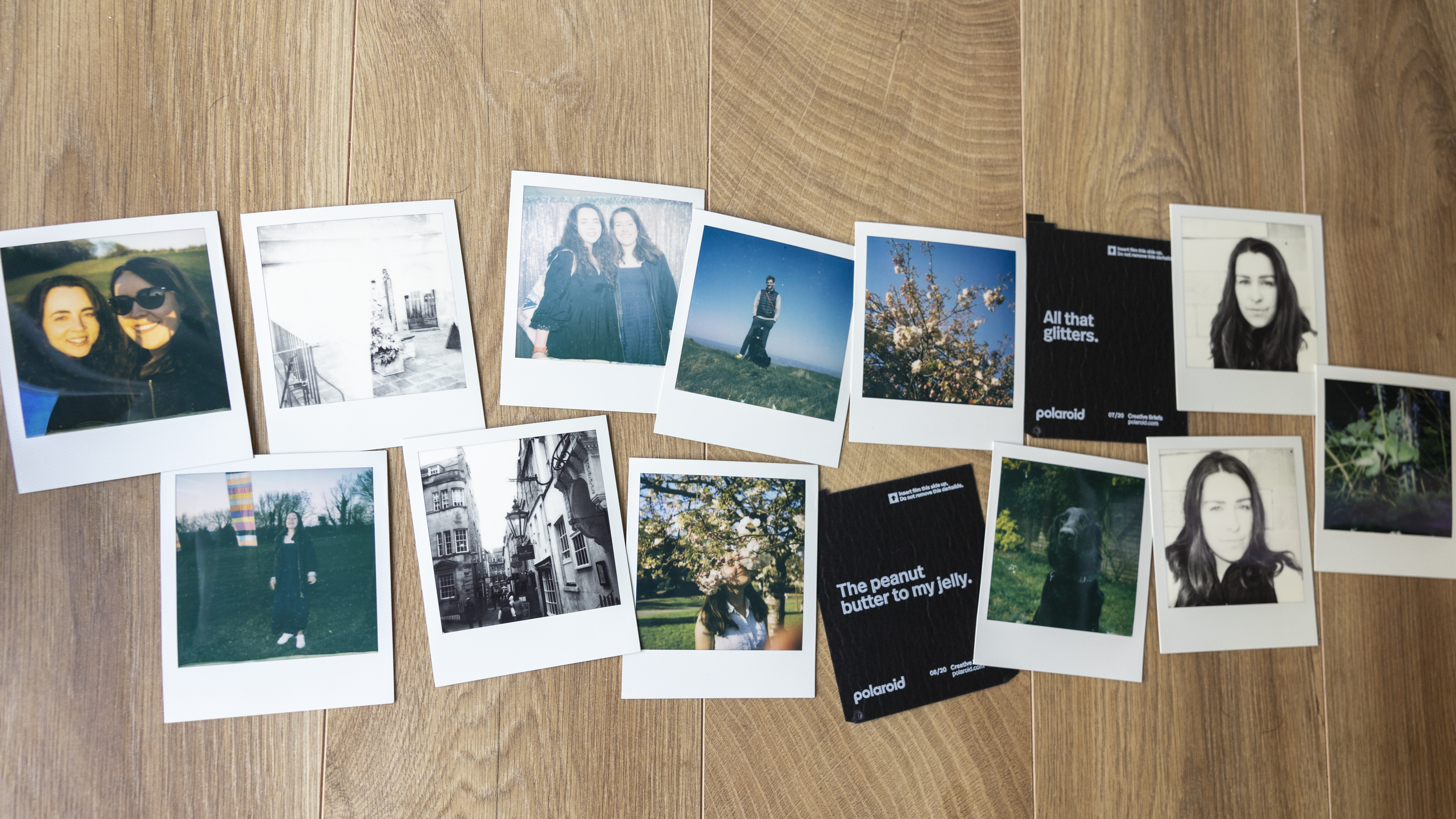
Despite there being no option to focus manually as with the Polaroid I-2, I found almost all of my shots with the Flip were critically sharp. The camera uses sonar waves to detect your subject distance, then selects the best lens from its four-lens system (0.65m, 0.85m, 1.2m, 2.5m). It’s very clever, and even in a party marquee, portraits came out crisp.
When half-pressing the shutter button to focus, you hear a noise when one of the four lenses has been selected. What’s clever is that an alert on the lid display will flash if you’re trying to shoot a subject that’s too close and out of the camera range.
Still, it’s worth noting that the Flip’s minimum focusing distance is around 0.4m, which isn’t quite far enough to get a sharp, frame-filling selfie. I could just about hold the camera far enough away at arm’s length to trial it but ended up with unwanted empty space around my head and shoulders. If you’re into your flora and fauna, there isn’t yet a macro filter or attachment for Polaroid to make true close-ups work.
Exposure was a mixed bag. Polaroids like light, and it's recommended that you keep the flash on for all shots except bright sunshine. This is meant to be the brightest flash of any Polaroid, and the strength adapts based on the subject distance for anything up to 4.5m away. I experienced this power, but not always in a good way, and often my outdoor shots were overexposed to the point of losing details, even on a cloudy day. As with the Polaroid Go 2, the flash gets activated by default when you flip up the lid, and a few times I forgot this.
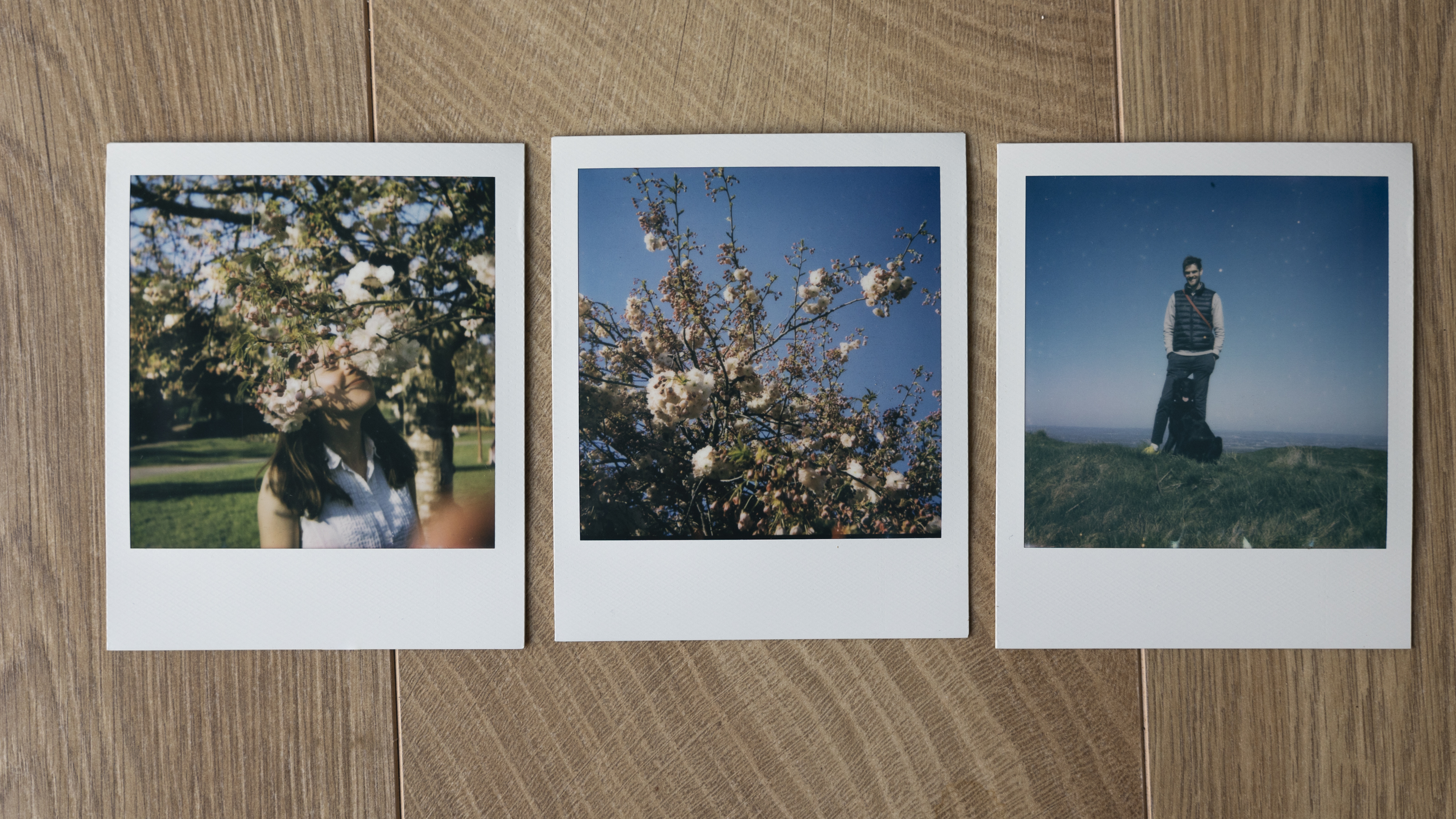
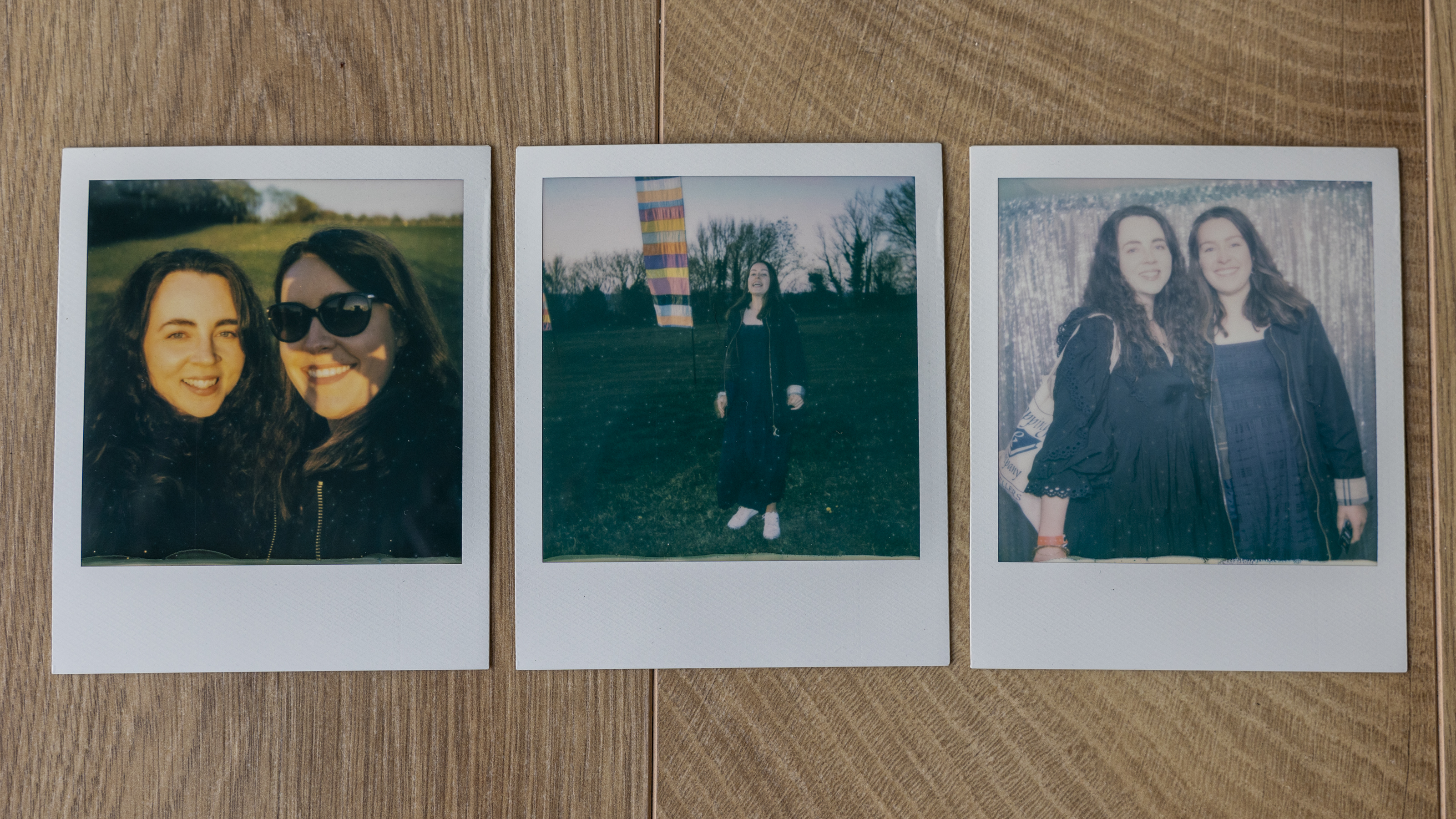
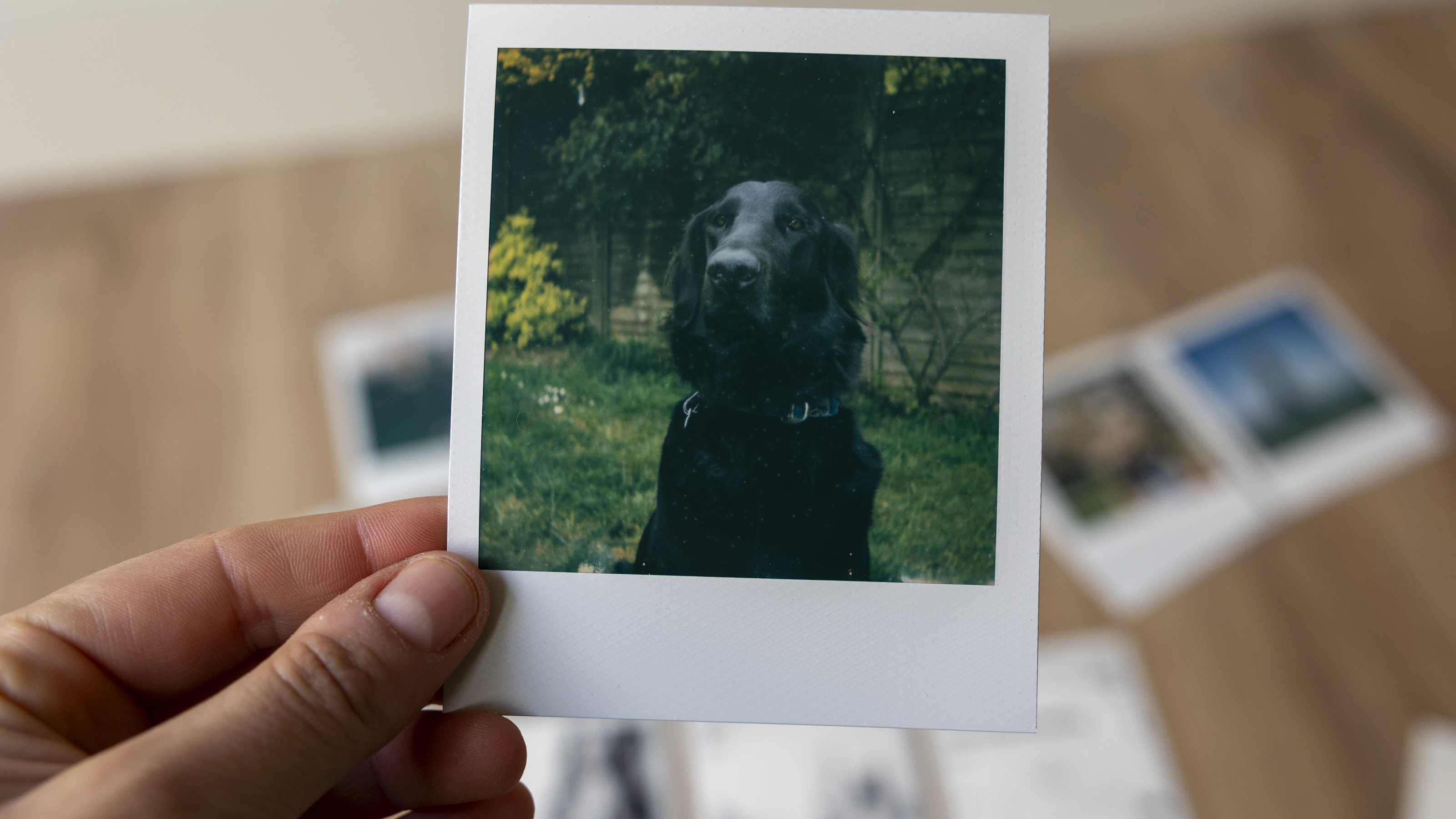
The tones you get from Polaroids have always felt distinctive, yet anecdotally the hues from my Flip shots felt a little richer and bolder than those from the I-2. On a warm spring day in the UK, the exposure of a pink blossom tree felt warm and well-saturated, while the vibe of a cooler sunset party was also captured effectively, if not tending towards more of a green hue than I’d have liked.
Of course, there’s no way to change the white balance in-camera. What you get is dictated by the film and the shooting environment. The B&W i-Type film I used showed great contrast, and I loved the amount of depth I could capture down a long, narrow street in my home city of Bath, UK. But again, it was easy to overexpose the bright Cotswold stone and lose that detail with the flash.

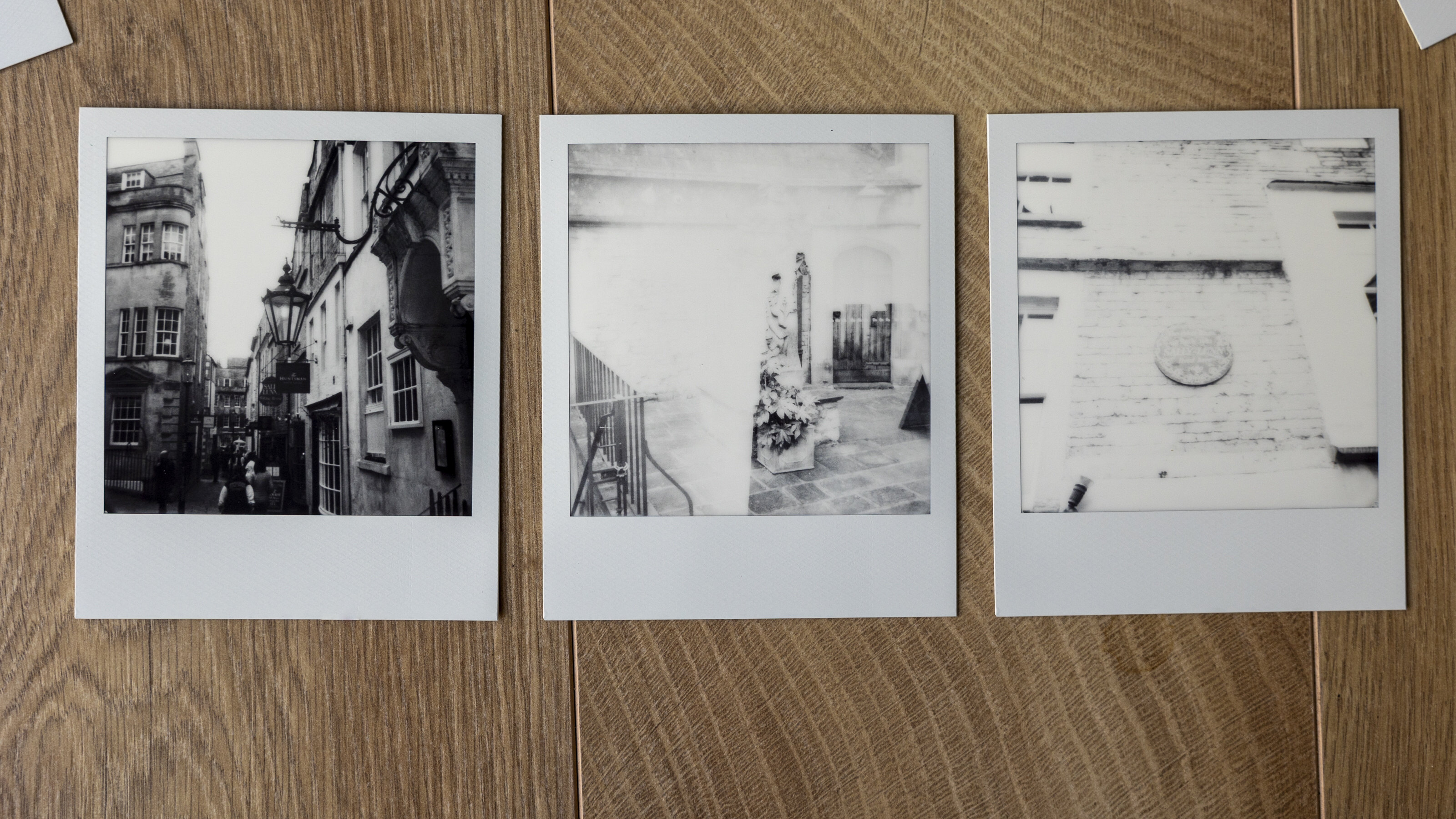
You can’t control the Flip’s exposure settings manually. For inexperienced users or people who just want to point and shoot, this is probably a good thing. The Flip does the hard work of choosing the aperture and shutter for you, meaning fewer wasted shots if someone decides to grab the camera at a party. But if you’re a more advanced photographer, as I am, you may find Flip’s setting choices creatively limiting.
As far as battery duration and charging times go, I couldn’t find any official specs from Polaroid. When I first got the camera I left it plugged in overnight to ensure it was full of juice for the start of testing, and it still hadn’t passed the halfway mark when I’d finished three packs. I tended to shut the lid after every shot, though, so each user’s mileage may vary.
During testing, I loaded up my second pack of color I-Type film only to find it wasn’t ejecting from the camera after each exposure. Polaroid makes loading film into the Flip so quick and simple, and it's something I've done with other Polaroids hundreds of times. I want to suggest it was a camera and not a user error, but either way, it does highlight how much film and money you can waste should things not quite go to plan. That’s the same with many instant and film cameras and not a unique flaw to the Flip, of course.
The prints aren't quite as instant as Instax, and need a while (I found at least ten minutes) to settle away from the light to develop properly. For me, this is a great metaphor for Polaroid in general. Despite being designed for ease of use in terms of operation, the Flip still requires a bit of time to learn its ways, exposure tendencies and to hone your craft. Do that, and you'll be rewarded with sharp retro results more times than the Polaroids of the past.
Should I buy the Polaroid Flip?
Buy it if...
You're after a cool-looking throwback
The Flip is reminiscent of popular vintage Polaroid cameras, including the One Step Flash. I'm not suggesting that you should pick style over substance, but I found this bright and chunky camera a great conversation starter.
You want to point and shoot, and that's it
In a busy world, it's nice not to have to think for a while. I found the Polaroid Flip enjoyable because of its ease of use. There are no gimmicks or filters, and I like that all you really have to decide is whether the flash is on or off.
Don't buy it if...
You want a small and subtle camera
Polaroid Flip's design is decidedly retro and bulky. Although it's not heavy to wear around your neck, it's equally not a camera that you can slip into a small bag or clutch. I'd look at the Polaroid Go or the Instax Mini if you're after proper portability.
You don't like square prints
You'll be limited by the roughly 8 x 8cm exposed area that Polaroid film gives you. If you want more options for composition with landscape and portrait framing, you might be better off with an option like the Instax Wide or Evo.
Also consider
Polaroid I-2
When I tested the I-2 I was so impressed with the image and build quality that I saved and bought my own. It costs more than double the Flip but offers an advanced experience with manual exposure control and sharper autofocus. Taking the same square, I-Type film, it gives instant photography for connoisseurs.
Fujifilm Instax Mini Evo
If you're not fussed about the Polaroid brand or square prints but still want a retro vibe, I'd recommend the gorgeous-looking Mini Evo. It's a hybrid model, meaning it snaps digital prints and lets you choose whether to print them on instant film. That means less waste and cost, and the Mini Evo is more pocketable, too.
How I tested the Polaroid Flip
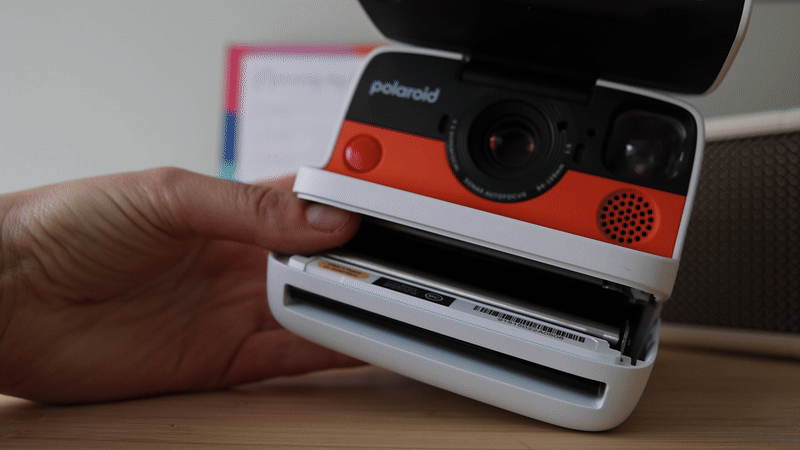
- Over a week, I took photos indoors and outdoors, day and night
- I tested based on decades of Polaroid experience
- I shot a double pack of colour I-Type and 8 exposures of B&W film
I tried my first Polaroid camera back in the nineties, and since then I've reviewed many instant cameras including the Polaroid I-2 in 2023. I had one of the first review samples of the Polaroid Flip and tested it for over a week before its official launch date. Needless to say, it was always in my bag or around my neck during that time.
I took it out on countryside dog walks in the sunny British springtime, on day trips in the Cotswolds, to an evening festival for my company's 40th anniversary and to brunch in the city. The idea was to try it in as many lighting conditions and real-life scenarios as possible.
I went through a double pack of Polaroid I-Type color film (16 exposures) and a pack of B&W Film, taking shots with and without the flash, using the self-timer and the exposure compensation option. The Polaroid app wasn't available for use with the Flip for most of my testing period (as the camera was under embargo) but I had a day to try the functionality and add notes to this review once it was.
First reviewed April 2025
Lauren Scott is an experienced journalist and freelance photographer based in Bath, UK. She's been in the tech industry for over ten years; serving as the former Managing Editor of our sister site Digital Camera World. As well as raving about cameras past and present for TechRadar, Lauren also tests fitness apps, trackers, and headphones. A keen polymath, she has bylines on Woman & Home, Space.com, Canon Europe, PCGamesN, and Stuff Magazine. When she's not working, you'll find her testing yet another new curry recipe, or teaching her Flat-coated Retriever how to retrieve.
You must confirm your public display name before commenting
Please logout and then login again, you will then be prompted to enter your display name.
